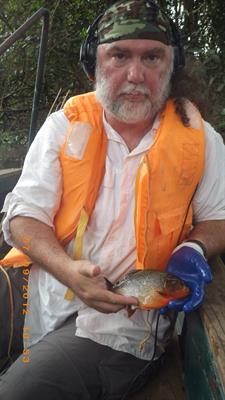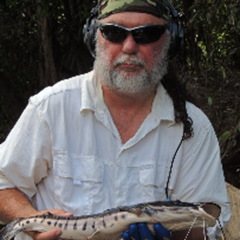
Underwater Soundscape Ecology
Collection Editors
Rodney Rountree, Marta Bolgan, Simon Linke, Camille Desjonquères, Michael FineViews
64 viewsParticipating Sections
Submission Deadline
Closed
About this collection
In the last two decades exciting research has been conducted on the underwater soundscape of marine and freshwater ecosystems. What’s a soundscape? Its simply all the sounds that occur in a habitat. In many ways the soundscape of a habitat is so unique that you can identify the habitat just by listening! Unfortunately, until recently few scientists studied the underwater soundscapes of the world. But recently there has been an explosion of research in marine habitats from the deep sea to our coastal estuaries, and in freshwater habitats from the Amazon River in South America to ponds, lakes and rivers in our own backyards. You probably already know that whales and dolphins make sounds, but did you know that a lot of fish make sounds too? How about aquatic insects? Turtles? Lobsters? Crabs? Shrimp? Even mussels and sea urchins! However, we don’t know much about these sounds yet. Most of the sounds we hear underwater are unknown. Image, we don’t know what’s making most of the sounds even right off the docks of New York City, much less in your local pond or stream.But there is an urgent reason why scientists need to focus on underwater soundscapes more than ever. That’s because these habitats are being saturated with noise pollution from human activities. Noise from boats can drown out the soundscape in some areas and can even hinder the behavior of not just dolphins and whales, but fishes and other animals too. Other types of noise that can be harmful to animals are some kinds of sonar, seismic blasting, and pile driving. Pile driving is the process where large machines are used to install pilings (poles) into the seabed to support piers and bridges. Seismic blasting is used to map the seafloor by setting off loud sounds and listening for the echo bouncing off the bottom. For example, scientists can use seismic blasting to look for oil deposits. But other kinds of noise can also be a problem if its “masks” natural sounds in the soundscape. Imagine trying to talk to a friend next to a construction worker using a jackhammer. Not so easy to do. It’s hard to hear each other because of the jackhammer noise. That’s an example of masking noise. The jackhammer sound masks your voice, making it difficult to listen to each other. Sounds from construction, car traffic, and even airplanes can sometimes cause masking.
In this collection we hope to introduce you to the exciting research being conducted around the world on freshwater and marine soundscapes. We will learn about the soundscapes of exotic places like the Amazon and the deep-sea, as well as places like the rivers and ponds near you. Our collection will focus primarily on sounds of fishes and invertebrates (like insects, crabs and lobster). Topics will include “how do fish make sound”, “why do fish make sounds”, “how does noise affect marine and aquatic organism” and learn about recent studies that describe the sounds piranha make, investigate the mysterious “Kwa Kwa” sound, and investigate the importance of fart, burp and cough sounds to fishes. Yeah, farts.
Would you like to submit to this collection?
For researchers interested in submitting to this Collection, please consult our author guidelines and check that you have all the essentials included before submitting




